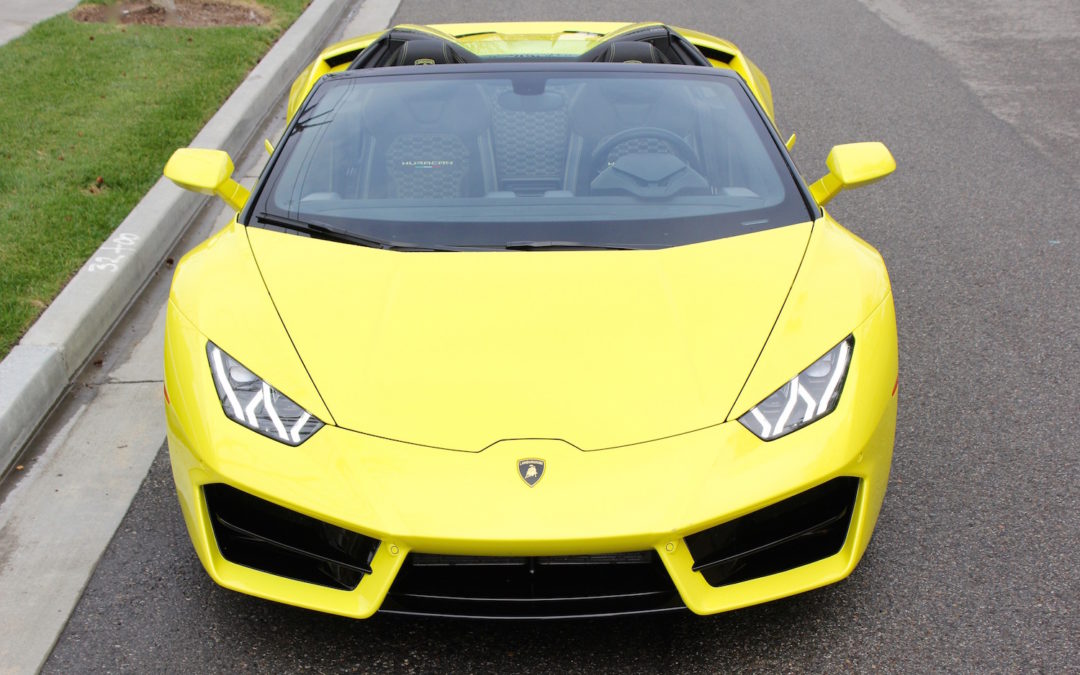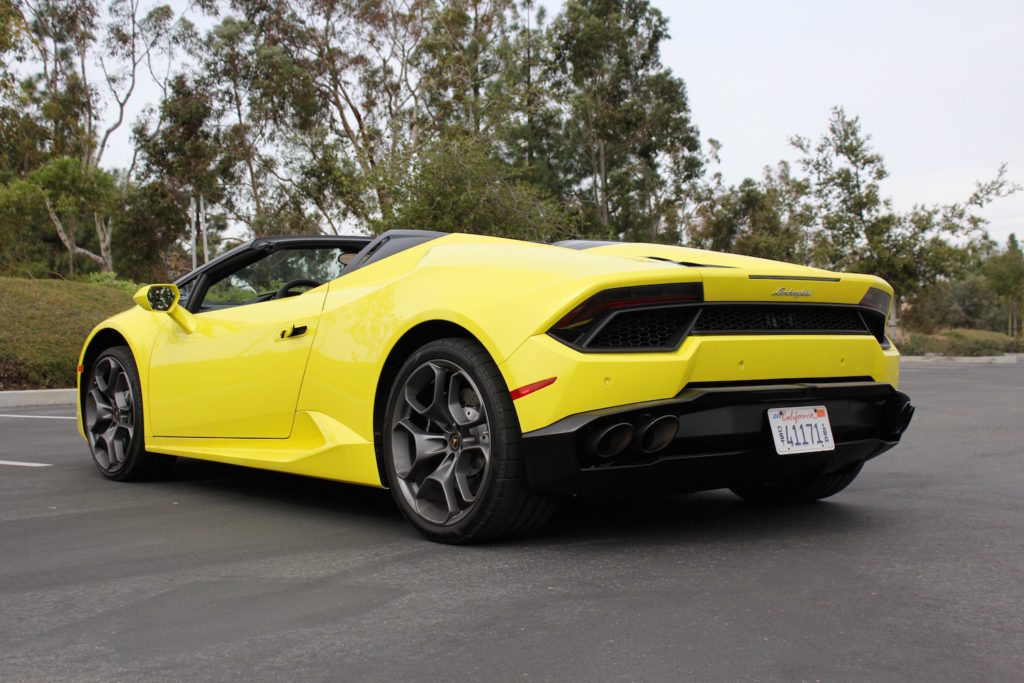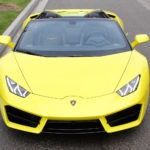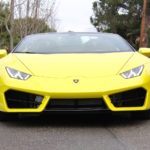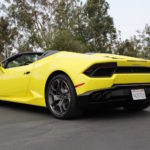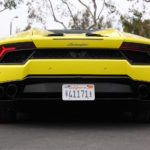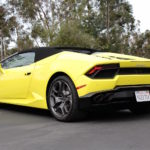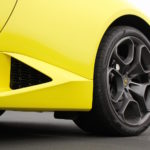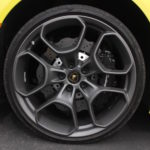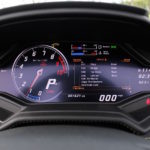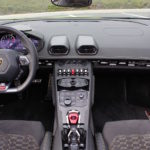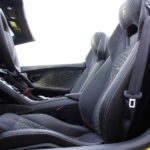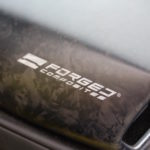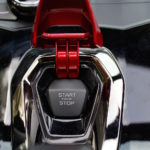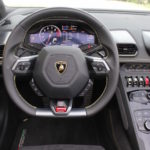In 2013, Lamborghini retired its best-selling model ever, the Gallardo. One year later, the Huracan assumed the brand’s entry-level supercar mantle. Since then, the Italian automaker has expanded its Huracan model range to include an all-wheel drive coupe (LP610-4), roadster, and rear-wheel drive coupe (LP580-2).
This year, Lamborghini adds one more model to its stable, the LP580-2 Spyder. Lamborghini’s most affordable roadster applies 571 horsepower and 398 pound-feet of torque to the rear wheels via a seven-speed dual-clutch transmission. Unlike the LP580-2 coupe, however, there isn’t a pesky roof to muffle that 5.2-liter V10 sonnet.
The LP580-2 doesn’t just introduce affordability to the topless Lamborghini portfolio; it pioneers Forged Composite materials on a mainstream model. Forged Composite is Lamborghini’s term for a revolutionary carbon fiber manufacturing process. Far easier to produce, and yet lighter than both steel and aluminum, this material will become integral to the company’s future products. For now, though, the marble-looking substance has only been applied to the LP580’s air vents, door handles, and steering wheel paddles.
Lamborghini–V2 from Clint Simone on Vimeo.
“We first saw the benefits of Forged Composite as a structural solution with the Sesto Elemento, and now, with advances in technology, the possibilities have grown,” said Federico Foschini, Lamborghini’s Commercial Director.
Apart from the nouveau-carbon-fiber treatments, the Huracan LP580-2 Spyder wears a distinctive Giallo Pearl exterior paint, 20-inch alloy wheels, and dark chrome accents. These add-ons alone tack $26,600 to the Spyder’s $219,780 starting figure, but they combine for a completely unique aesthetic. Both the Huracan Spyder and the Audi R8 Spyder (upon which the Huracan is based) are among the most beautiful roadsters ever built. Only a handful of designers can craft a roadster that’s dazzling with its top up and with it stowed.
Like the rear-wheel drive coupe, the LP580-2 Spyder features a reworked front and rear fascia to distinguish it from the LP610-4 Huracan. Black slats embedded within the air intakes enhance the front’s aggression compared to the all-wheel drive model, and a taller honeycombed grille above a redesigned lower diffuser spice up the rear. The same distinctive fins from the LP610-4 Spyder appear behind driver and passenger when the roof has been stowed (a task which takes just 17 seconds).
More: Pagani’s Huayra Roadster Is A Stunner
The Huracan Spyder’s cockpit feels as if it were pulled directly from a fighter jet, save for the seating configuration. Lamborghini’s signature ignition switch, toggles, and driver-focused cabin turn any errand into a sense of occasion. Tightly bolstered seats keep both passengers locked in place during hard cornering, but remain comfortable for long hauls. A 12.3-inch digital display gives the driver full command of navigation, media, traffic, and telemetry information, but affords plenty of real estate to the speedometer/tachometer combo.
It’s easy to get caught up in the Huracan LP580-2 Spyder’s ravishing design, but a wailing, snapping V10 engine note reminds you this is, first and foremost, a performance vehicle. Pin the throttle, and the Pirelli-wrapped rear tires claw at the tarmac, rocketing the Spyder to 60 mph in 3.6 seconds and on to a top speed of 198 mph. Meanwhile, Lamborghini’s brilliant transmission rips through gears in fractions of a second. Unlike the kicks of the Aventador’s dual-clutch, the Huracan fluidly moves from gear to gear while the car’s surroundings blur. Switch to manual controls and the Huracan greets each downshift with popping overrun.
The LP580-2 Spyder features three drive modes, in order of aggression: Strada, Sport, and Corsa. Each mode tweaks steering response, throttle sensitivity, exhaust flow, and electronic stability control intervention for a mild or mental driving experience. Whichever flavor of fun you choose, the LP580-2 is sensationally quick. Steering response is immediate, braking power is immense, and acceleration is blistering.
Those shopping the $200K convertible supercar market will cross-shop the Huracan LP580-2 Spyder with the Ferrari 488 Spider and McLaren 650S Spider. Among these rivals, the Huracan LP580-2 is by far the cheapest, but also the least powerful. The Ferrari boasts 660hp and 560 lb-ft of torque for its $275K starting figure and the McLaren counters with 640hp and 500 lb-ft of torque for $280K.
Choosing between these three incredible machines will ultimately come down to buyer enthusiasm. The Ferrari and McLaren may be quicker than the Lamborghini, but their twin-turbo V8’s and comparatively conservative styling simply can’t match the Huracan’s wow-factor.

